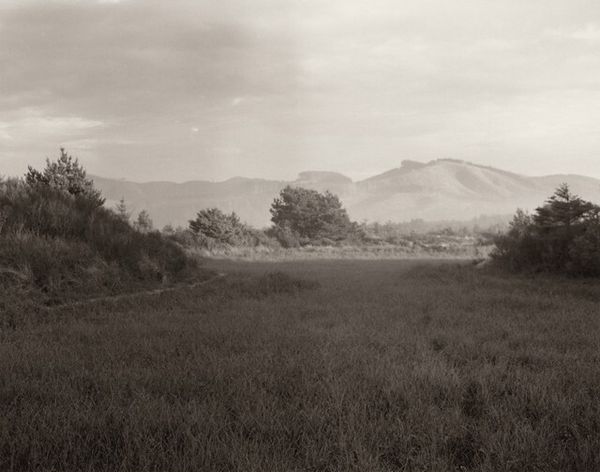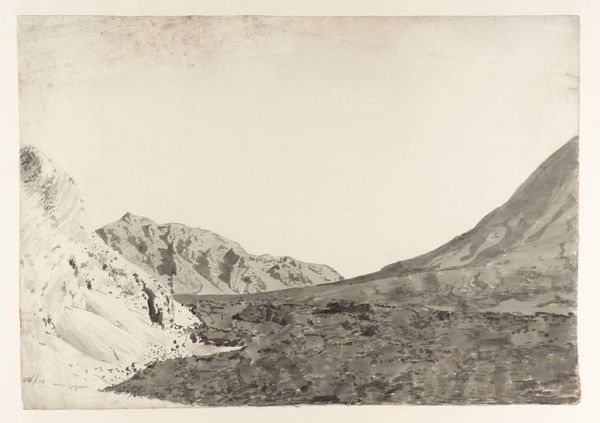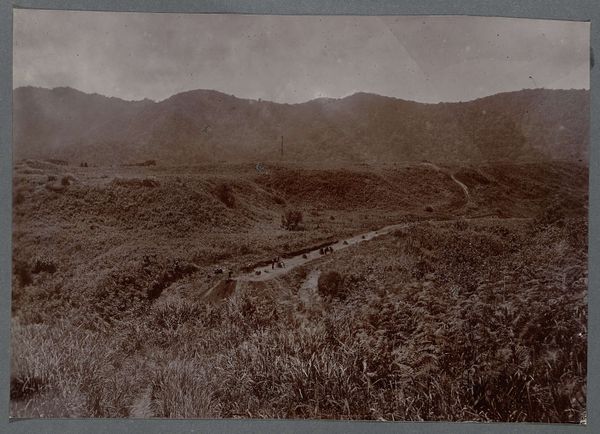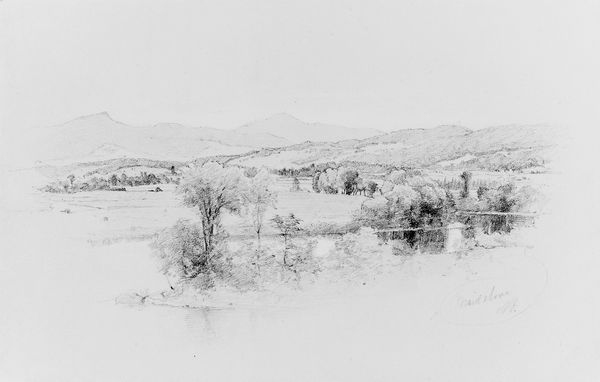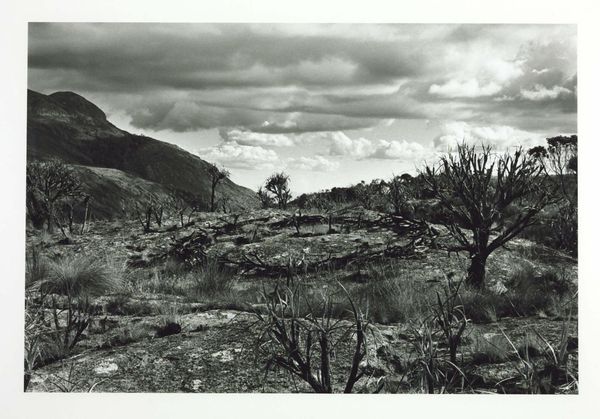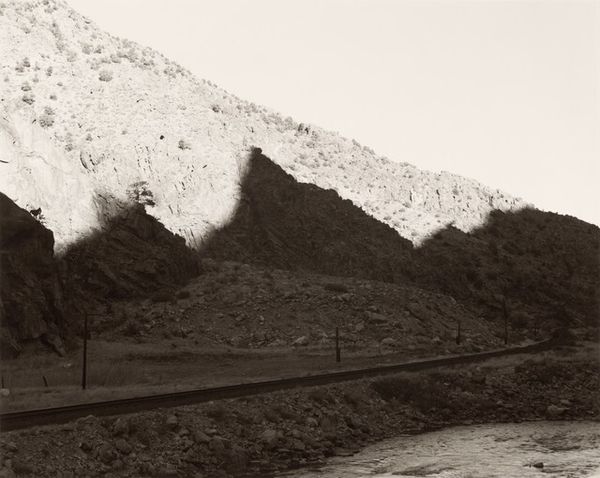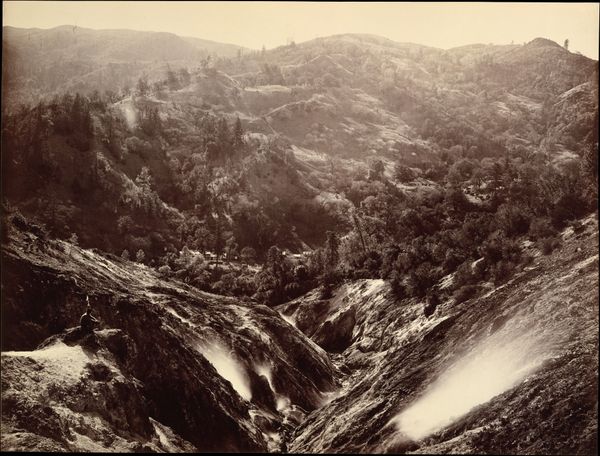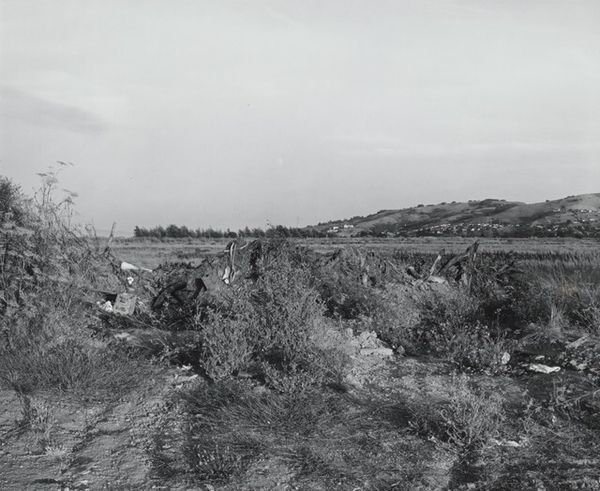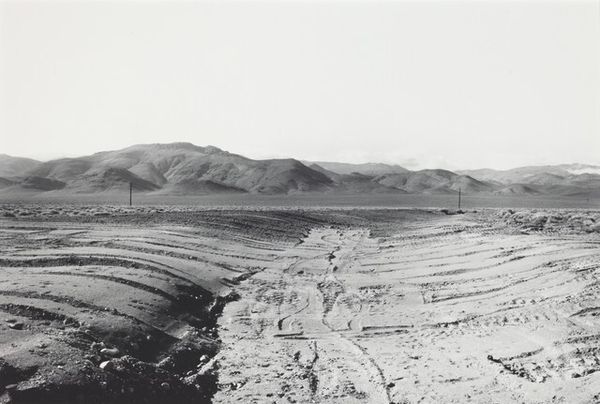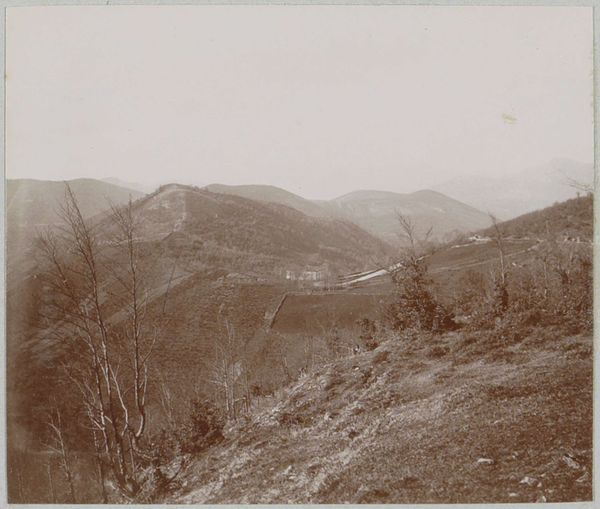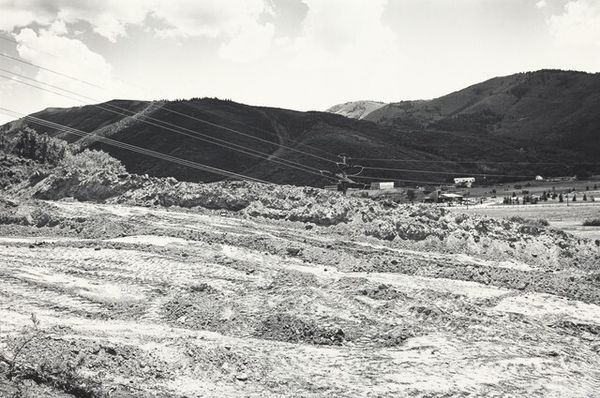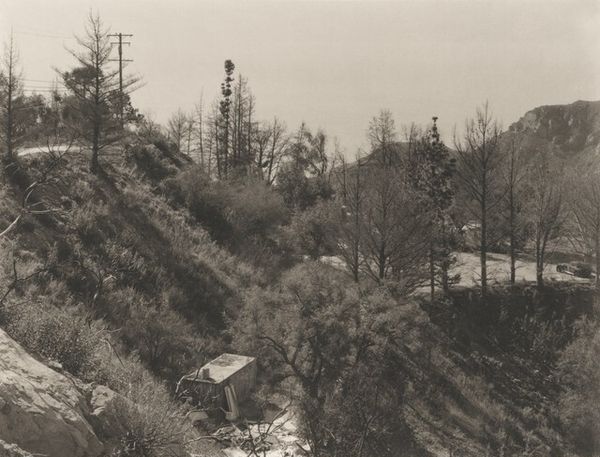
Eroding edge of a former citrus-growing estate, Highland, California 1982
0:00
0:00
photography, gelatin-silver-print
#
black and white photography
#
landscape
#
photography
#
gelatin-silver-print
#
monochrome photography
#
monochrome
Dimensions: image: 37.3 × 46.6 cm (14 11/16 × 18 3/8 in.) sheet: 40.4 × 50.4 cm (15 7/8 × 19 13/16 in.)
Copyright: National Gallery of Art: CC0 1.0
Curator: Robert Adams’ gelatin-silver print, "Eroding edge of a former citrus-growing estate, Highland, California," made in 1982, confronts us with a ravaged landscape. What strikes you first? Editor: The scale is deceptive; it feels both grand, with those distant mountains, and disturbingly intimate in its depiction of destruction. There’s a tension in how the land is exposed, almost like an open wound. Curator: Exactly. The citrus industry's decline and subsequent real estate development represent the systematic erasure of the past, mirroring broader patterns of capitalist exploitation and environmental degradation that affect marginalized communities disproportionately. It's more than just a photograph of a ditch; it’s about power. Editor: I'm drawn to the physicality of it all: the dirt, the way the light catches the rough edges of the carved-out earth, even the presence of what looks like discarded piping or trash in the lower section. These elements point directly to the process—the literal cutting and displacement of material that facilitated this shift in land use and labor. Curator: Adams’ stark aesthetic avoids romanticizing the West, offering instead an unflinching view of environmental decay—a direct consequence of unchecked expansionism and unsustainable practices that affect identity and place. It becomes a stage on which the drama of human intervention unfolds. Editor: Right, and that comes through in the details, doesn’t it? It’s about extraction, plain and simple. I mean, this image makes one consider the labor expended on transforming fertile land into an architectural structure and consider what happened with that former harvest. The photograph materializes the effects of changing demands. Curator: Indeed. This is about so much more than aesthetics or some pretty vista. Editor: So while the piece looks initially bleak, considering it through the perspective of eroded land, consumption, and construction practices brings more appreciation. Curator: By making visible the erasure of landscapes and livelihoods, Adams implicates viewers, encouraging us to reflect on the socio-political choices shaping our environments.
Comments
No comments
Be the first to comment and join the conversation on the ultimate creative platform.
